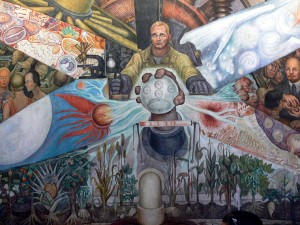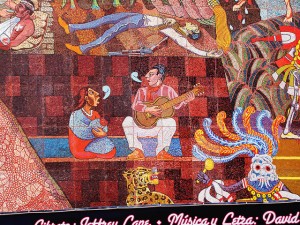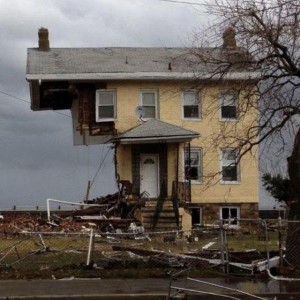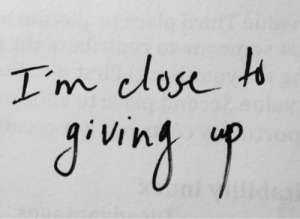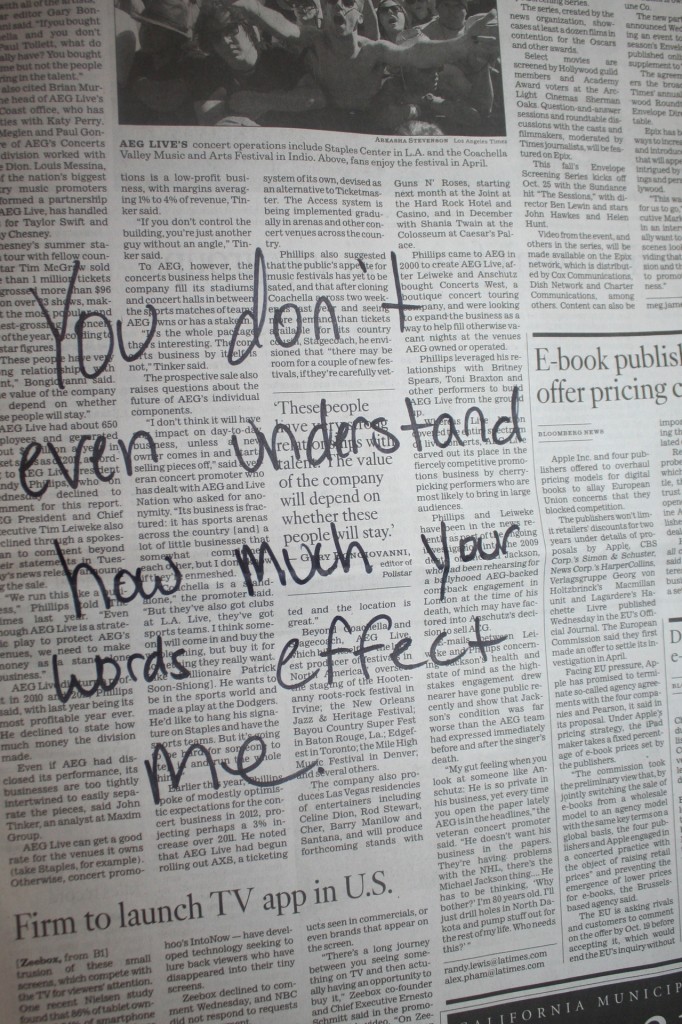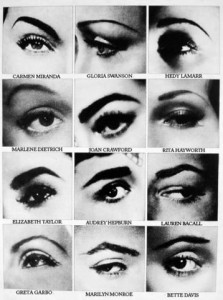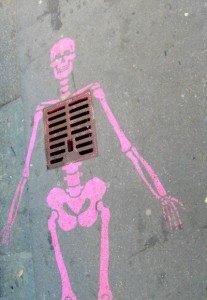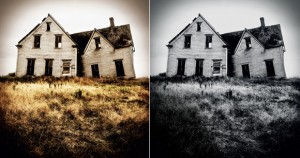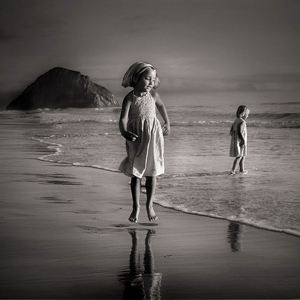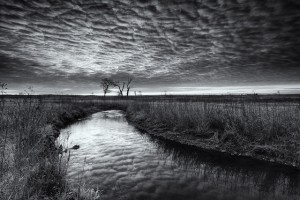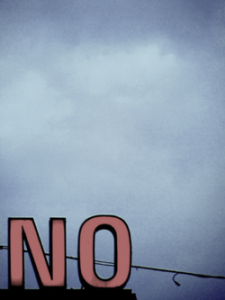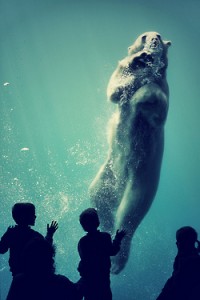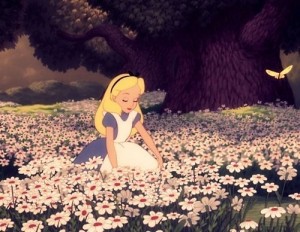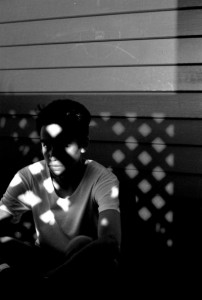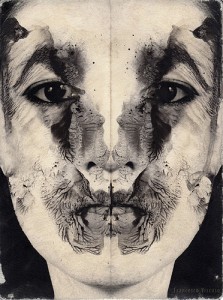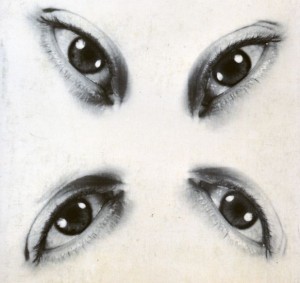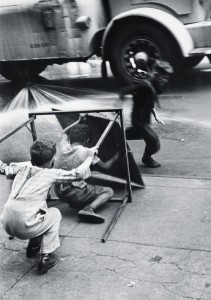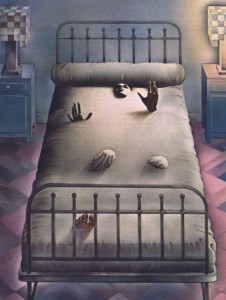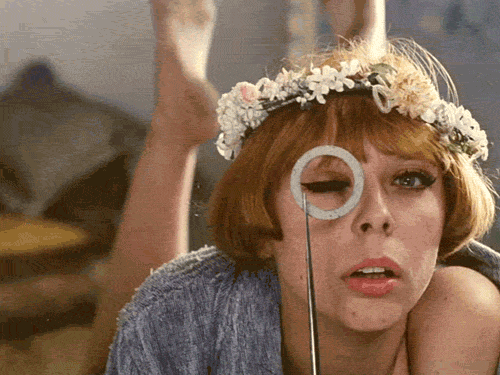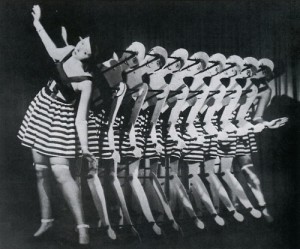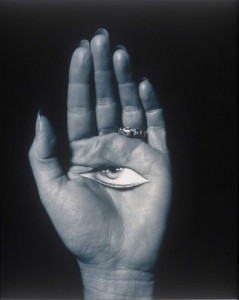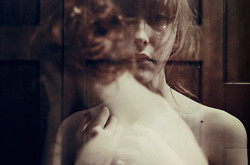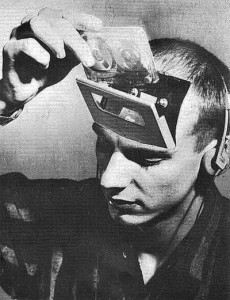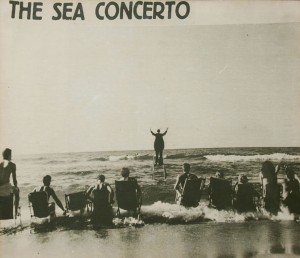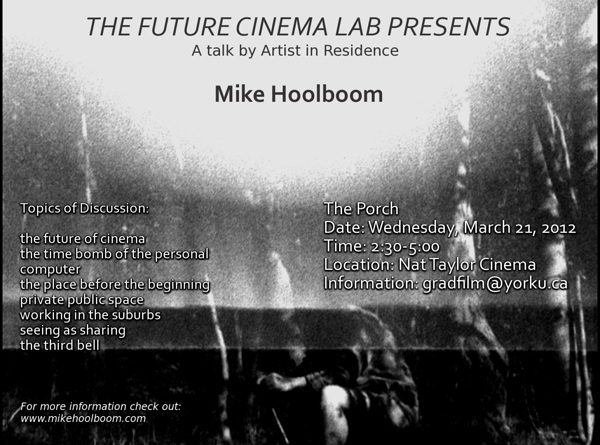
Talk delivered as artist-in-residence at York University’s Future Cinema Lab March 21, 2012
Three Bells
You are standing with friends in the City Theatre in Mexico City. The murals on the wall showing the revolutionary struggles that built this theatre – they’re so beautiful, but you can hardly hear them, because you’re so busy talking with your friends. And then you hear a bell, a deep chime that is so unexpected it sounds almost like it’s come from your intestinal tract – oh excuse me – and after the bell there is a voice that trembles out of the loudspeakers and says, “This is the first bell.” And then after another five or ten minutes there is a second bell and the voice says, “This is the second bell. This is the second bell.” And then finally, at last, after another five or ten minutes has elapsed, Tercera llamada, tercera! Tercera llamada, tercera! Comenzamos! A third bell chimes and the voice says, “This is the third bell. This is the third bell.” Three strikes you’re out. Three bells you’re on. On with the show.
Before the Beginning
Tell me, is it possible to be nostalgic for something that happened just five minutes ago? Is that what it means to own a personal computer? I was just wondering if we could return to the place we were all at – five minutes ago – if we could all do a little bit of time traveling all the way back to that delicious place of gathering, as you were all making your way into the room today. As each of you delivered your presentation model. It was so enjoyable watching you all arrive. The reluctant shuffle, the hopeful spring, the bored multi-tasker (I-am-my-right-thumb). As we take our place, we find our place here. And for this moment that is not yet official, that is not yet sanctioned or onscreen or authorized – in this unauthorized moment when I am still myself and not myself — I arrive and you arrive at a place before the beginning. Before the third bell. So tell me, you’ve been here before, what kind of things go on, exactly? What does it make possible? What does it feel like, before the beginning?
Porch
You know here at York University… I don’t know whether you’ve ventured out into the kind of, sort of, neighborhoods around here but if you get lost for instance… If you dedicate yourself as a student to become productively lost – as Walter Benjamin would have us do – you quickly notice that we are in the suburbs. That we are already here in a tangential relation, at the fringes, somehow outside, and at a distance from the centre. And one of the architectural features of the suburb is something called a porch. Perhaps you’ve seen them? Glaring back at you from the sooty windows of the intercampus shuttle? The porch is a space that is outside the house, but not all the way outside. It’s also, kind of, inside. It’s part of the house, right? Could we call it the outside of the inside? When we are standing in the porch we are outside and inside at the same time. And this place in this room, before the offical blablabla starts – do you think we might name this space: the porch of this room? It happens before the official program, before the curtain is raised, but it’s also part of the curtain raising. It makes the curtain raising possible, doesn’t it? What would a show be if there was no one there to see it, if there was no approach, if no one made an approach to the image? If there was no place before the beginning, if there was no porch. If there is no porch, perhaps there is no house. If there is no place before the beginning, perhaps it is impossible to begin.
Cinema
I’m only trying to start myself, to find the first words maybe because I’ve been thinking that the cinema, the entire project of cinema, is like the porch. It’s kind of strange, isn’t it? The cinema asks us to gather in a place just like this so that we can be private in public, so that we can be alone together. And what a delicious kind of loneliness. It is a loneliness that is also a kind of food, or, to use the language of cinema, a re-past. The past again, that offers us a consoling kind of loneliness. A rich and necessary loneliness. The cinema used to insist: we’re all in this together, but each of us in our own way. And this public solitude is made possible, is founded on making an approach towards the image. It happens in this place before the beginning.
Time Bomb
Perhaps this particular quality of loneliness is something that is being left behind as we engage in the mass self-behavioural-adjustment time bomb therapy of the personal computer. Where did all of my time go? Oh it went into my time bomb. I look into my computer and I look up and an hour has passed. A day has gone by. My whole life has just passed. The computer absorbs time, it’s like a black hole of time. It’s Wednesday, it’s Friday, it’s the weekend that isn’t a weekend any more because I’m still plugged in, still part of the interface.
Third Person
Inside my computer, I’m with everybody I’ve never even met, my new faceless facebooked friends, the ones who have become, like me, the ones who will remain reliably far away. In other words, I have become part of a very different kind of loneliness. Like you, like all of you. I am leaving a certain kind of loneliness behind and because I’m older than you, old enough to remember when I didn’t spend my whole life throwing my arms around my personal time bomb, I miss it. I long for the old loneliness. I long for it so much that sometimes I like to come here, to rooms like this, though I know it’s all so stale dated, 20th century hangover, let’s get over it already. This room – isn’t it obvious? – is part of the way we used to be. It holds a place, like a memento mori, for the people, for the kinds of loneliness we used to experience, when we would come to rooms like this, to be alone together, to feel again the alternating current between the first person and the third person. How does my story become our story? How does our story become my story? In the frame of this room, in the frame of this room that provides an alternating current between my story, and our story. And back and forth. And forth and back. It’s what we know, it’s what I know. It’s what I know, it’s what we question. It’s what we question, it’s what I hope for. It’s what we hope for, it’s what I need. It’s what I need it’s what we become.
Sharing
Here is Jean Perret, Swiss maestro of the documentary: “When I was younger I watched television on Sundays. Afterwards I usually felt depressed and lonely. I was looking but had this feeling of not seeing anything. I had shared nothing.” I think this is so interesting, so important. I had a feeling of not seeing anything… And why hadn’t he seen anything? Because he hadn’t shared anything. Seeing and sharing, the act of seeing is also an act of sharing. The act of bearing witness, is an act of sharing. Could we say that the traditional cinema, the cinema of the theatre, the cinema of this room, is based on this act of sharing. We share by being alone together. There are two sides to every picture, there’s me, and there’s us, there’s the porch and the house, there’s the space before the beginning and the beginning.
I would like to tease this out a little bit more, to say a bit more about the sudden disappearance of rooms like this, that hold a space for the porch. For this time, this pre-time, this time that lasts as long as three bells. This time before time, the time, the prelude, that makes time possible. That makes the time of this talk, the time of these pictures, these words, possible.
Here is Iranian thinker Youssef Ishaghpour speaking with Jean Luc Godard: “You talk about cinema not being preserved from time but preserving time (M Blanchot).” A cinema that preserves time, that acts as a container to hold time, to hold a place for witnessing. Time is a material for every film and video maker, you don’t simply show a face, you show the time of that face, and you give the gift of time in that face, you allow us to see it, for how long, and then a moment longer, and then a moment longer. That face becomes a container of time, a way to hold time in our private public space. And Youssef contrasts that with another condition, here he goes.
Youssef continues, “You talk about trying in your work to tune your ear to time but also to give it expression, and you contrast that with the totalitarianism of the present, the organization of a unified time whose task is to abolish time.” A unified time – they had to do this when they built the railroads, to make sure that trains leaving the coast would arrive here, in the middle of the country, on time. What does it mean to be on time? It means to be inside a unified time. It’s hard, perhaps, for us to imagine, that people used to live in local, idiosyncratic bubbles of time, villages of time, the way we used to live in local bubbles of language. Time and a word, time and language, were local, meaning that the way the sounds came out of your mouth, copied and shifted from your parents, your grandparents, your neighbours, the sound coming out of your mouth, the language you spoke was the language of your place, of your village. But one day the king announces we will have only one language, not a thousand kinds of French, not a thousand kinds of English, one French, one English. And the sound of that local place disappears, it’s the same sound in every place, it’s a unified language. And time works exactly the same way, it’s a unified time.
The cinema holds on to this old place, it recreates the village here, in rooms like this, so that we can each learn the time of this place, the time of our lives. It is a local time, a time that comes from this place. A time that is made possible by the moment of the three bells. Could we say it again? Each movie, each film and video, could be, might possibly be, an instance of local time. What expression do we use for standardized time? Mean time. But in the face of this uniform time there are islands where time operates in a different way. In a local way, arising out of the causes and conditions of this room. And this local time, this local container of time, this local dialect of time, is created out of the space of the three bells, it is made possible because there is a space before the beginning, a space to make an approach.
Our new digital technologies, on the other hand, cause this before and after time to disappear. The more I show you the less you see. I’m showing you all the time, but you can’t see anything. Because there’s no time, no approach, no sharing.
The computer removes the space before the beginning, it displaces, it replaces, the space before the beginning, because as we’ve already noted, there is no beginning to the internet, there is only more. There is only this infinite present moment, the infinite horizon of this clickity click moment. Youssef names this “the disappearance of time.” And he says that this happens via “real time,” the sense that something is happening now, right now, reporting to you live. If something is happening now and you are experiencing it now, then there can be no approach, no time before the image. Perhaps we could say that the image appears before we have the time to see it, it happens too quickly to see it.
Jean Perret: “In today’s situation we are met with a globalization of audio visual communications. We live in a world wide circulation of information, committed by big business. In this flow you can’t find pictures any more, that’s the problem.” Aha, the flow. The wave, surfing the waves, surfing the flow of the internet. It has no beginning, no ending, only a flow, only a flux. In place of the three bells or the porch – there’s a flux. Jean: “We’re living in the three main lies: continuity of information, to be collected simultaneously to the event, and in proximity to it.” The information can be dished out as a story, it has a beginning, middle and end. There are no ruptures, there is nothing that cannot be shown or told. Everything is here. This is the first lie, the lie of continuity. The second lie is that the information is collected while the event is happening. Alongside the event. The image says: you are here. This is what is happening now, you are what is happening now. And the third lie: is that the camera has access, moves in proximity, in close-up. You’re seeing it all, there is no more to show.
“We are told we are near. The obscene moment of these three lies together was 9-11. Everyone has seen, at the same moment, the crash of the plane. It’s a big orgasm of the news, but you can look at these pictures a hundred times and never understand what is going on. It’s a lie because you don’t get to the point, as spectators you don’t understand, there’s no space for your intelligence. You can’t find your roots, so it’s the beginning of a collective fantastic amnesia.”
In other words, there is no space before the picture. Why did this happen? It’s not enough simply to show something. I don’t know whether you’ve ever had the chance to walk into a stranger’s house. Maybe even to spend the night in a stranger’s house. Someone you’ve never met, you don’t know anything about them. And in the morning, or when you walk in, there are markers and signs, photographs even, of this person’ s life. Oh look, there’s a young boy smiling from a class picture. Oh look, there’s a young girl with her comrades, arm in arm, in some forgotten forest. The pictures are charged – that young man died the day after this photograph was taken, it was an accident it couldn’t be helped. The car’s brakes didn’t work so the old machine jumped the curb and ran the boy over. They didn’t even sentence the driver, it wasn’t his fault. This is what the photograph is really about – innocence and guilt, or the way we stand hovering, at every moment in our lives, hovering at the very edge of death. This is what the boy’s smile is telling me: I didn’t know I was going to die. I think this knowledge is what Jean names as roots, how do we find roots in our pictures? How can we recreate this place before the beginning, or after the end, and include it, so that our pictures can become a sharing, a place of sharing, and hence a place of seeing? When you see the picture of this boy for the first time it means nothing, and when you see it for the second time it means everything. The second chance, the second look. The look that is also sharing. The me looking that becomes the we looking. The I that becomes we, in this place of the theatre, in rooms like this. It’s near and it’s far, it belongs to everyone and it belongs to me.
In the world of television the word they use is coverage. Have you got me covered? There is a sense of protection in this, isn’t there? The covering, the coating, the armour. What is being protected, what do we need to be protected from with all this coverage?
The pictures on television assure you that you are close, that you are right there where the action is, where the reaction shot is, the camera appears to listen like a good friend. The picture seems to speak in the same language as what is being pictured. What is behind the camera and what is in front of the camera – it seems that these two places are the same place. And between these two places that are the same place, is you – you the viewer – and you the viewer always knows what’s happening. You are never in the dark, in an unknowing place. Everything is clear, and close, and transparent. We’re all friends here.
The familiar images of 9-11, or the images from wars in Afghanistan or Pakistan or Iraq. How many times did we hear the people from Iraq speaking? Did we hear the people from Pakistan speaking about what was happening in their country? How many Afghanistan citizens could we watch that weren’t corpses, or grieving parents in the hospital? Is there not time enough to show us, to show each other, to share with each other, something of the daily life in Kabul, so that we Canadians, busy killing young children and mothers and fathers for nearly a decade now, could have some sense of who we are killing? What is the coverage, the coverage of the Canadian news media, what is being protected here? If coverage is the protection racket. I think this is part of the problem when this place before the beginning, when this place of the three bells, when the porch is abandoned. I’m just going to build a house, I don’t need a porch. I don’t need a space before the beginning. Then the picture only exists from one side: there’s me, and there’s a world of things over there. Not a world of subjects, like me, but only me. And this is a very different kind of loneliness. A violent loneliness, that’s what Jean said about TV, and it is violent because there is no only one side, and if there’s only one side it always needs coverage, the protection racket of coverage.
The cinema, the old cinema, the people that we used to be, the loneliness that we used to cherish, is based on a movement that Freud called fort und da, near and far. It is a movement, it is a rhythm of near and far, of me and you, of me and us, the first person and the third person. Of myself here, and the screen over here. Of the very large and the very small.
Approach
The space before the beginning is the time of arrival. I think everyone in this room knows something about that. It takes time to get here to York University. It takes what feels like my whole life to get here, to this place. In other words, to arrive at this place, to arrive at a picture, to arrive at words that are also pictures, it has been necessary to make an approach. Everyone in this room has made this approach, everyone of you in your own way. And this is the important part: the approach is part of the image. The porch makes the house possible. The place before the beginning makes it possible to start in the first place. So what does it mean to embrace this new technology that has banished the beginning? And along with it: the place before the beginning?
Digital Picture
What do we do when we need to take a picture? The urge might erupt as some synaptical shuffle, some rumbling in the guts: need… picture… And then you whip out your I-device and you point it in the general direction of whatever is passing through the field of awareness. Actually you point it away from the feeling, this feeling here, in the frame of the body. You point your all purpose I-thing so that you can remove yourself from this feeling here, from this place here. You point it so that you can remove yourself entirely from the feelings of the body – and then you take your mouse clicking hands and you go click. Or no click, depending on your system preferences. And then you don’t go into the darkroom to develop it, you don’t take it to the lab so that someone else can develop it, the picture appears right away. There is no place before the picture, and there is no place after the picture. Call it digital oblivion or digital eternity. Depending on whether you’re an optimist or a pessimist. Either way, the picture appears before you can see it, as if it’s already there.
Scrum
And then this horrible thing happens that I don’t even want to talk about in what they used to call mixed company. Tell me: are we mixed or unmixed company? As soon as the picture appears the bearer of the I-device needs to look at it right away. There is often some version of what they call in football a huddle, what the rugby people name a scrum. There is a digital scrum. “Oh look!” Everyone looks. Have you ever been asked to participate in one of these gatherings? I find it unbearable, in the Christian hangover that still resides somewhere in my lower intestine, I lower my head in shame, no please God no, not that. The sheer social indecency of it. It seems particularly strange that this is a social act, that this is something people do together. We used to paste photographs into family albums, and they would be taken out and pored over. Today: one second, let’s have a look that has no looking in it, then we’re done. I’m wiping my hands, I’m wiping my eyes clean. Next. Um, waiter? Picture waiter? Could I have another picture here, please.
Maybe it’s just me, I don’t know. But this digital scrum review moment feels like: I am throwing this moment away. Again. I’ve thrown it away once by not having a time before the beginning of the picture. And now I’m throwing it away again because I’m not looking in order to see into this moment, I’m looking to confirm something I already know. And the confirmation of what we already know seems the absolute antithesis of the photographic project, which has at least something to do with arriving at this moment. The moment of practice. We can only practice in this moment. In this present moment. How do we arrive at this moment? Not by dragging into it a lot of, “Oh I already know what she’s going to say.” Shunryu Suzuki calls it: throwing a shadow across a room before you enter it. You’ve already made up your mind, you’ve already decided before you got here. Have you ever had a conversation like this? I already know how I’m going to vote. I’m going to vote for me, and I’m going to vote against… you.
Two Sides
If you already know, you are engaged in something like coverage. In covering the event, of refusing the picture’s arrival from the other side. From the other side. When a picture arrives from the other side, it makes sharing possible. Seeing is also sharing. Me and you. A picture, a real picture, is made from both sides of the camera. Something rarely commented upon in this we-don’t-have-time-for-that-anymore kind of time. With the clumsy analog cameras, which required you load the camera, you advance the physical thing in the camera, the physical film in the camera – many cameras were heavy or awkward to move around – and I’m not nostalgic for these old devices. But I’m suggesting that because they didn’t work so well, because of their clumsy heavy inconvenience, that’s what made them work. Because they didn’t work so well, they worked so well. Because while you were fumbling with the light meter, the aperture setting, the shutter speed, time is moving. There is a time before the photograph is made. And this time before a photograph is made is exactly the time of the porch. This time before the photograph is made is exactly the time of the three bells, when you walked in here today, in a place before the beginning. These clumsy machines helped to produce a picture – not every time, but they helped, they helped set up the conditions that might lead one towards making a picture, just as today, or so I’m suggesting, the conditions tend to defeat the possibility of making a picture.
Stereo
How do we make a picture? Does this seem like a strange question to ask, when the task, the delivery system, the activity has been so simplified, that what was once the province of specialists now lies in everyone’s hands? Isn’t everyone, already, a photographer? A filmmaker, an artist? Everyone here in this room, everyone that you’ve ever met, and everyone you will ever meet. I would like to return us to the science fiction of the present. Think of it as an experiment. Could we let go of our own coverage, the coverage we bring to our own lives, the coverage that we’ve each of us brought to this room. When is he going to say something that’s going to help me get a job? Or at least get an A in the course? What if we could step into the next moment, into this moment here, which is the only moment that a picture can be made. A photograph cannot be taken in the past. Or in the future. It can only be taken now, and could it be possible to enter this moment without deciding before hand what the moment is going to be? Can we make an approach to this present moment? In order to receive what is happening from the other side. Because I think that the common wisdom, the old saw, the digital untruth insists: you make the picture. You hold the camera, you hold the magic keys to the magic kingdom, therefore you make the picture. But I don’t think it really works like that. I think that pictures are made from both sides of the camera. I think a picture arrives when you allow yourself to enter this moment from both sides of the looking glass, otherwise it’s only taking, it’s only taking, taking, taking. And the pictures of taking, the pictures that fill our newspapers, that fill our movies – they rarely have power because they have no roots. I believe that making pictures, I believe that the act of making pictures is an act of stereo. It arrives from two sides at the same time. Making pictures is an act, an art of stereo. Two dimensions, not one dimension.
I’ve been asked to speak about the future, about the future that we’re all busy becoming, but it seems to me that we have to do it from here, from this shore, from these mountains. In this old room where it is still possible to have a place before the beginning. A place that makes the old beginnings possible. Perhaps this is a helpful place, perhaps it is the most necessary place from which to speak about the future, the time bomb embracing, infinite horizon of cinema that we are turning into. I’d like to show you some pictures, they’re just scenes from a movie not yet finished, they’re just impressions, moments, and I wanted to share them with you in hopes that they will hold a place for your time, that they will hold time for you. I’m an artist, not a philosopher, I don’t believe in ideas, I believe in my friends, in the faces of my friends. They’re always so busy showing me the way, how to take the next step. With the help of my friends I’m learning how to find the porch of the computer, how to find the place before the beginning in my computer. So then when I turn the computer on now it doesn’t ring out with that Brian Eno charm, instead, I hear a bell, and a Spanish voice saying, “Tercera llamada, tercera! Comenzamos!” Ladies and gentlemen, this is the third bell.
